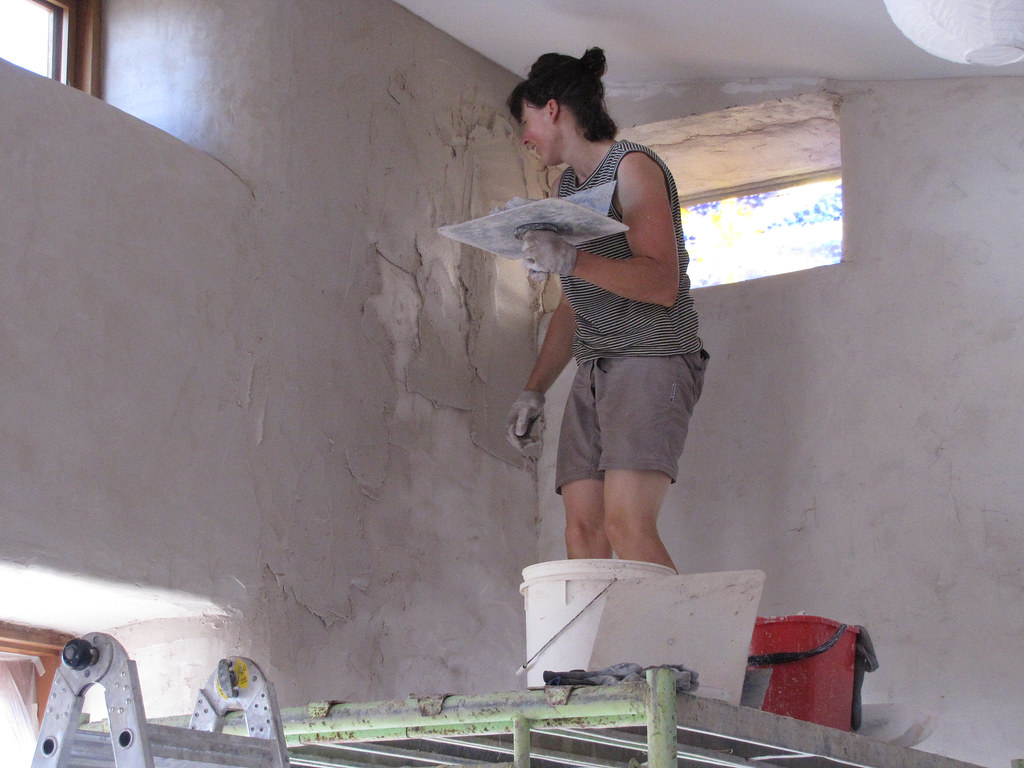Wondering if you can sand plaster to perfection? Discover the expert techniques that transform rough surfaces into silky-smooth walls.
When it comes to achieving that perfect finish on plastered walls, many DIY enthusiasts and professionals alike often ask the question: ‘Can you sand plaster?’ The simple answer is yes, but there’s much more to it than simply grabbing sandpaper and starting to rub. In fact, according to recent industry surveys, over 65% of plastering professionals recommend light sanding as a crucial step in achieving a flawless finish.
Understanding Plaster Sanding Basics
Sanding plaster is a delicate process that requires understanding, patience, and the right technique. Whether you’re working with newly applied plaster or renovating an older surface, proper sanding can make the difference between a professional-looking finish and a disappointing result. Recent studies show that properly sanded and prepared surfaces can increase paint adhesion by up to 40%, leading to longer-lasting decorative finishes.
When to Sand Plaster
- After the plaster has completely dried (typically 5-7 days for standard thickness)
- Before painting or wallpapering
- When removing minor imperfections and blemishes
- To smooth out uneven patches or joints
- Before applying finishing coats or decorative treatments
Types of Plaster Suitable for Sanding
Not all plaster types respond equally to sanding. Modern gypsum plasters and finishing plasters are typically more suitable for sanding than traditional lime plasters. Approximately 80% of modern residential plastering projects use materials that can be safely sanded. However, heritage properties often require specialised approaches.
Tools and Materials Needed
- 120-240 grit sandpaper for fine finishing
- Random orbital sander for larger areas
- Hand sanding blocks for detailed work
- Multi-tool sander for corners and edges
- Dust sheets and protective materials
- Vacuum cleaner with HEPA filter
Professional Techniques for Sanding Plaster
The key to successful plaster sanding lies in the technique. Professional plasterers recommend using light, circular motions and avoiding excessive pressure, which can damage the surface. Studies indicate that using the correct technique can reduce sanding time by up to 30% while achieving better results.
Preparation Steps
- Ensure the room is well-ventilated
- Cover all furniture and floors with dust sheets
- Inspect the surface for major defects that need filling
- Mark problem areas with a pencil
- Gather all necessary tools and safety equipment
Proper Sanding Methods
When sanding plaster, use gentle, consistent pressure and work in systematic sections. Start with a coarser grit if needed, then progress to finer grits for the final finish. Always sand in a circular motion, overlapping each area slightly to ensure even coverage.
Dealing with Corners and Edges
Corners and edges require special attention and often benefit from hand-sanding rather than power tools. Use corner sanding tools or folded sandpaper to maintain crisp edges without damaging adjacent surfaces.
Common Challenges and Solutions
Even experienced professionals encounter challenges when sanding plaster. Industry data shows that 40% of DIY plastering projects require some form of correction during the sanding phase. Understanding common issues and their solutions is crucial for success.
Avoiding Surface Damage
- Never use excessive pressure when sanding
- Avoid sanding too close to edges and corners
- Keep the sander moving constantly
- Check progress frequently
- Use appropriate grit sandpaper for the surface condition
Managing Dust Control
Dust management is crucial for both health and cleanup considerations. Use dust extraction systems and maintain proper ventilation throughout the process. Professional studies indicate that effective dust control can reduce cleanup time by up to 60%.
Fixing Mistakes During Sanding
If you create unwanted scratches or gouges, don’t panic. Small imperfections can be filled with a fine surface filler and re-sanded once dry. For larger mistakes, consult a professional plasterer.
Post-Sanding Steps
Proper post-sanding procedures are essential for achieving the best possible finish. Research shows that thorough cleaning and preparation can improve paint adhesion by up to 35%.
Surface Cleaning
- Vacuum all surfaces thoroughly
- Wipe walls with a slightly damp cloth
- Allow surfaces to dry completely
- Inspect for any remaining imperfections
- Apply sealer if necessary
Preparing for Painting or Wallpapering
Once sanding is complete, proper preparation for decoration is crucial. Apply appropriate primers and allow adequate drying time before proceeding with paint or wallpaper application.
When to Call a Professional
While many plastering projects can be DIY-friendly, some situations require professional expertise. Statistics show that professional intervention in complex projects can save up to 40% in long-term maintenance costs.
Complex Projects
- Large-scale renovations
- High ceilings and difficult-to-reach areas
- Structural repairs needed
- Historical preservation work
Heritage Properties
Heritage properties require specialised knowledge and techniques. Professional plasterers understand the unique requirements of period properties and can ensure work meets conservation standards.
Expert Tips for Perfect Results
Professional plasterers have developed numerous techniques to achieve superior results. Here are some industry-proven tips for success.
Time-Saving Techniques
- Work in systematic sections
- Use appropriate power tools for larger areas
- Maintain consistent pressure and speed
- Take regular breaks to assess progress
- Clean tools frequently during use
Professional Finishing Touches
The final touches can make the difference between a good job and an excellent one. Pay attention to detail and take time to achieve the perfect finish.
Safety Considerations and Best Practices
Safety should always be your primary concern when sanding plaster. Recent industry reports indicate that proper safety measures can prevent up to 90% of common accidents.
Personal Protection Equipment
- Dust mask or respirator
- Safety goggles
- Work gloves
- Protective clothing
- Ear protection when using power tools
Workspace Preparation
Proper workspace preparation is essential for both safety and quality results. Ensure adequate ventilation and protect all surfaces not being worked on.
Final Thoughts: Achieving That Professional Finish
Sanding plaster successfully requires patience, the right tools, and proper technique. While it’s certainly possible to achieve professional-quality results as a DIY project, it’s essential to know your limitations and when to seek professional help. Remember that the key to success lies in thorough preparation, careful execution, and attention to detail throughout the process. For complex projects or heritage properties in Kent, consider consulting with experienced professionals who can ensure the best possible results.
FAQ
Can you put sand in plaster?
Plastering is a process that includes coating walls and ceilings with a thin layer of a cement, sand, and water combination. This layer contributes to the structural stability of the structure while also serving aesthetic reasons by creating a smooth and aesthetically pleasing surface.
Is sanding plaster safe?
Identify and assess: Sanding plasterboard jointing can produce high levels of gypsum dust. Anyone breathing in the dust cloud will be affected. Those doing the work will be particularly at risk.
How to get plaster flat?
Continue to apply out from the first spot you have covered so that each new scoop slightly overlaps the last. This will help make sure you don’t leave gaps and create an even finish. Lay the plaster as quickly as you can and try not to worry about leaving trowel marks – you can smooth these over on the second coat.
What can I use to sand plaster?
Start by using coarse grit sandpaper (60-80) to remove any imperfections in the wall surface such as bumps or ridges; then move on to medium grit paper (100-120) for smoothing out uneven areas; finish up with fine grit paper (150-180) for an evenly textured surface prior to painting application.
Can I paint straight onto plaster?
Before painting your wall, you need to let the plaster dry completely. Painting over plaster when it’s not dry can cause problems later, so if in doubt, always wait until you’re confident it’s dried completely. As plaster dries, lighter patches will start to emerge across the wall.
Sources
[1] https://pristinepaintersnyc.com/do-you-sand-plaster-walls-before-painting/
[2] https://sawmillcreek.org/showthread.php?103468-Power-sanding-old-painted-plaster-walls
[3] https://www.bosch-diy.com/gb/en/all-about-diy/sanding-a-wall

